new posts in all blogs
Viewing: Blog Posts Tagged with: ask an editor, Most Recent at Top [Help]
Results 1 - 7 of 7
How to use this Page
You are viewing the most recent posts tagged with the words: ask an editor in the JacketFlap blog reader. What is a tag? Think of a tag as a keyword or category label. Tags can both help you find posts on JacketFlap.com as well as provide an easy way for you to "remember" and classify posts for later recall. Try adding a tag yourself by clicking "Add a tag" below a post's header. Scroll down through the list of Recent Posts in the left column and click on a post title that sounds interesting. You can view all posts from a specific blog by clicking the Blog name in the right column, or you can click a 'More Posts from this Blog' link in any individual post.

By:
rgarcia406,
on 7/31/2014
Blog:
The Open Book
(
Login to Add to MyJacketFlap)
JacketFlap tags:
Awards,
writing advice,
Laini Taylor,
how to,
Science Fiction/Fantasy,
Writer Resources,
Publishing 101,
stacy whitman,
Tu Books,
ask an editor,
New Visions Award,
New Voices/New Visions Award,
Add a tag
In this series, Tu Books Publisher Stacy Whitman shares advice for aspiring authors, especially those considering submitting to our New Visions Award.
Last week on the blog, I talked about the importance of following submission guidelines and basic manuscript format. This week, I wanted to go into more detail about why a reader might stop reading if they’re not hooked right away. Here are some comments I’ve heard our readers make about manuscripts that didn’t hook them:
- Story does not captivate in first few chapters
- Boring
- Writing not strong, or not strong enough to hold a young reader’s (or teen’s) interest
- Parts of the writing are very strange (not in a good way)
- Sounded too artificial
- Reminds me too much of something that’s really popular
- Too Tolkienesque or reliant upon Western European fantasy tropes
- Concept cliche
How do you get your writing to have that “zing” that captivates from the very beginning? This is a little tougher than just following the directions—this is much more personal to each reader and each writer.
Is your writing boring readers?
There are a couple different issues in the list above. Some readers lost interest simply because they were bored. If you find yourself telling readers of your book, “Don’t worry! It gets really good in chapter five!” consider whether you’re starting your book at the right moment in time. The phrase “late in, early out” is one to remember—perhaps you don’t need all the information that leads to the “really good” part. Or perhaps you need to revise to make that information more interesting and faster paced.
I don’t recommend simply dumping this information into a prologue. Many young readers skip prologues entirely, and many more readers will lose interest if your prologue is long and boring—it’s the same principle as saying “just wait till chapter five!”
If the information in your first few chapters are crucial, yet readers are getting bored by it, consider spooling that information out little by little over the course of the book. You need to find the balance between giving enough information for the reader to be intrigued and wanting to know more, without overburdening the reader with so much information that they become overwhelmed or bored.
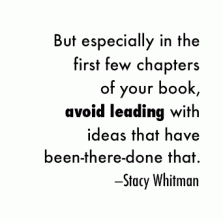 For example, take the first few pages of Laini Taylor’s Daughter of Smoke and Bone. On page 1, Taylor sets up the scene: it’s an ordinary day in Prague (interesting point number one: how many books are set in Prague?) and Karou is walking down the street toward school, minding her own business. It’s an active scene—something is happening—but it’s more about Karou’s internal mundane thoughts. However, it doesn’t stay mundane for long. By page 2, she’s been attacked.
For example, take the first few pages of Laini Taylor’s Daughter of Smoke and Bone. On page 1, Taylor sets up the scene: it’s an ordinary day in Prague (interesting point number one: how many books are set in Prague?) and Karou is walking down the street toward school, minding her own business. It’s an active scene—something is happening—but it’s more about Karou’s internal mundane thoughts. However, it doesn’t stay mundane for long. By page 2, she’s been attacked.
But it’s not your average “you have to have an action scene in the first scene!” attack. The author plays with expectations, intriguing the reader and making you want to know what happens next. We get some ex-boyfriend banter (also against expectations) and the promise of interesting, embarrassing things to come by the end of the chapter.
It helps that the book is well written. But it’s more than good prose that hooks the reader here—she spools out just enough to let you know that this is a unique book, and that you want to know more. The next two chapters do the same thing, and bit by bit, the reader comes to know Karou’s intriguing magical background.
What she doesn’t do is infodump in a prologue or the first few chapters about Karou’s history, the history of the world, and the history of the strange beings who raised her. Save those details for when they matter.
Look at your favorite books and read like a writer. For hooking a reader, look in particular at excellent examples of the first five pages of a wide variety of books. There are many ways to effectively open a book, and you need to find the way that works for your story. Reading other books like a writer will help you to zoom in on ways to perfect your craft.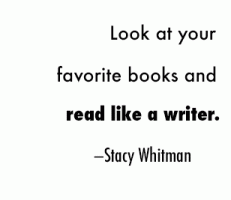
Another great resource for writers trying to figure out how to hook readers is editor Cheryl Klein’s essay “The Rules of Engagement” in her book Second Sight. It’s no longer available online (and I don’t believe the book is in e-book form), but it’s worth the price of the book for her discussion of various ways to hook readers via character, insight, action, and other methods. (Bonus: you also then get access to all her other thoughts on writing and revision.)
Over-reliance on common tropes
Several readers commented that several books relied too much upon Western European fantasy tropes (elves, fairies, etc.). There are ways of hooking readers with familiar story elements, but often most high fantasy tales boil down to “my elves are better than yours.”
 Look for new inspiration. (We’ll cover worldbuilding more in full in a few weeks.) But especially in the first few chapters of your book, avoid leading with ideas that have been-there-done that.
Look for new inspiration. (We’ll cover worldbuilding more in full in a few weeks.) But especially in the first few chapters of your book, avoid leading with ideas that have been-there-done that.
If your story concept relies on tried-and-true tropes, it’s not the end of the world. Take a look at books coming out now that are successfully changing the mold—books like The Coldest Girl in Coldtown by Holly Black, who has revamped (haha) the vampire genre, for example. The Coldest Girl in Coldtown updates the genre, makes vampires scary again. In what ways can you update and revamp the concepts in your book to hook readers?
The solution to your writing being “not strong enough”: practice
The number one complaint as to why a reader wasn’t hooked was that the writing wasn’t good. Once you get past obvious grammar and punctuation mistakes, this comes down to a greater need to practice your craft. Write regularly—it doesn’t have to be every day, but do it consistently. If your problem is time, you might find useful this advice from New Voices Award winner Pamela Tuck on how to carve out time to write on a regular basis. She has ELEVEN children, who require a lot of time and attention, especially because she home-schools them.
The more you practice, the better you’ll get. And next week, we’ll begin to drill down on elements that you can work on in the whole book, such as voice.
 Stacy Whitman is Editorial Director and Publisher of Tu Books, an imprint of LEE & LOW BOOKS that publishes diverse science fiction and fantasy for middle grade and young adult readers.
Stacy Whitman is Editorial Director and Publisher of Tu Books, an imprint of LEE & LOW BOOKS that publishes diverse science fiction and fantasy for middle grade and young adult readers.
Filed under:
Awards,
New Voices/New Visions Award,
Publishing 101,
Tu Books,
Writer Resources Tagged:
ask an editor,
how to,
Laini Taylor,
New Visions Award,
Science Fiction/Fantasy,
stacy whitman,
Tu Books,
writing advice 


By:
Hannah,
on 6/24/2014
Blog:
The Open Book
(
Login to Add to MyJacketFlap)
JacketFlap tags:
ask an editor,
writing award,
diverse books,
New Voices/New Visions Award,
New Voices Award contest,
New Voices Award winners,
writing contest,
aspiring authors,
New Voices Award,
Publishing 101,
Add a tag
In this blog post, our editorial assistant Samantha shares her thoughts on the New Voices Award and what she’s looking for from this year’s submissions.
The beginning of summer is my favorite time of year. School’s out, the weather brightens up—although this year in New York, it’s been a bit shaky—and New Voices season begins. This year marks our 15th annual New Voices Award contest, and I can’t wait to watch the submissions come rolling in!
Over the last fourteen years, LEE & LOW BOOKS has published more than ten books that have come to us through 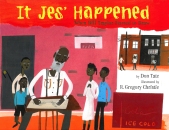 the New Voices contest, including Sixteen Years in Sixteen Seconds by Paula Yoo (2003 Winner) and Seaside Dream by Janet Costa Bates (2006 Honor). It Jes’ Happened (2005 Honor) received three starred reviews, and author Don Tate won the Ezra Jack Keats New Writer Award Honor. And we’re very excited about several New Voices winners and honors that will be published in upcoming seasons. We just love reading the amazing stories that have been submitted to the contest, and it’s inspiring to us to work with first-time picture book authors.
the New Voices contest, including Sixteen Years in Sixteen Seconds by Paula Yoo (2003 Winner) and Seaside Dream by Janet Costa Bates (2006 Honor). It Jes’ Happened (2005 Honor) received three starred reviews, and author Don Tate won the Ezra Jack Keats New Writer Award Honor. And we’re very excited about several New Voices winners and honors that will be published in upcoming seasons. We just love reading the amazing stories that have been submitted to the contest, and it’s inspiring to us to work with first-time picture book authors.
Last year we were thrilled to receive 165 New Voices submissions from authors all across the Unites States. With so many great manuscripts to read, we look for stories that stand out from the crowd. We love to be surprised by a 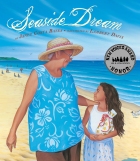 manuscript, whether it’s a biography of a fascinating but little known historical figure or an everyday story told from a unique perspective. A submission will catch our eye if it is something we haven’t seen before. Just as the New Voices contest seeks out talented new authors of color who might otherwise remain under the radar of mainstream publishing, we love to read stories about characters and subjects that are similarly underrepresented.
manuscript, whether it’s a biography of a fascinating but little known historical figure or an everyday story told from a unique perspective. A submission will catch our eye if it is something we haven’t seen before. Just as the New Voices contest seeks out talented new authors of color who might otherwise remain under the radar of mainstream publishing, we love to read stories about characters and subjects that are similarly underrepresented.
Another small but important detail that we appreciate when reading New Voices submissions is when an author pays close attention to the contest guidelines. It might seem trivial, but a good cover letter that follows the guideline requests—especially author information—creates a great first impression. You can see the full submission guidelines here and the answers to some frequently asked questions here.
We look forward to reading a great batch of stories this year and to discovering talented new authors through the New Voices contest. We hope you will help us spread the word to eligible authors!
Filed under:
New Voices/New Visions Award,
Publishing 101 Tagged:
ask an editor,
aspiring authors,
diverse books,
New Voices Award,
New Voices Award contest,
New Voices Award winners,
writing award,
writing contest 

 Stacy Whitman is Editorial Director and Publisher of Tu Books, an imprint of LEE & LOW BOOKS that publishes diverse science fiction and fantasy for middle grade and young adult readers. This blog post was originally posted at her blog, Stacy Whitman’s Grimoire.
Stacy Whitman is Editorial Director and Publisher of Tu Books, an imprint of LEE & LOW BOOKS that publishes diverse science fiction and fantasy for middle grade and young adult readers. This blog post was originally posted at her blog, Stacy Whitman’s Grimoire.
Yesterday, Sarah Hannah Gómez wrote about people of color in dystopias. Today I thought we’d look at the post-apocalyptic genre (which overlaps with, but is not always the same as, dystopias) from the craft side. A while back, as I was going through submissions, a few thoughts formed for me about worldbuilding in the genre due to things I was seeing again and again. This isn’t by any means a comprehensive list of things to think about—just a few things that struck me as a pattern in some recent reads (and something I notice when it’s done well).
I guess everything I want to say actually falls under the old (and very useful) “show, don’t tell,” – which of course is relevant whether or not your novel is set after the apocalypse. So, here you go:
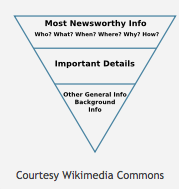
- If you include newspaper clippings/stories as metatext to support the main narrative, make sure that it actually sounds like a news clipping. Use inverted pyramid structure, starting with the most important details and filling in backstory and history only once important details have been included. Who, what, why, where, when: these are the most important things to focus on in the first paragraph.
One of my first publishing-related jobs in college was as a newspaper reporter, and the end of my stories—even my feature stories—often got chopped off for space. In news writing, your lede has to be an actual lede, not an introductory sentence, and you don’t include common-knowledge information (stuff all the characters would know because they live in that world) as an infodump in the second paragraph.
- Less is more in post-apocalyptic worldbuilding.
We usually don’t need to know every detail of the apocalypse in the first chapter, or even by the end of the book. In fact, it usually just slows down the reading and even occasionally turns off a reader to be reminded in every sentence just how bad the world is because of global warming’s effect a hundred years ago or because we ran out of fossil fuels or because a great plague hit the world three hundred years ago. These things are common knowledge to the characters—or perhaps they’re lost knowledge for the character, depending on how long ago the apocalypse happened and how much technology/media had broken down in the years since.
But generally letting the reader know exactly what happened within the first chapter or two turns into an infodump or an as-you-know-Bob. Actually, what you want to do is revealed in that last link—I didn’t know there was a name for it! Incluing, at least according to Wikipedia (which is of course so reliable, but let’s go with it for now unless someone knows of a more technical term), is what you really want to do.
- Reel out worldbuilding details little by little, cluing the reader in to worldbuilding details as they need the information (or slightly before, so as not to be jarring).
The best incluing example, the one I always go back to, is the first page or so of The Golden Compass, in which Lyra is talking to her daemon as they spy on a conversation in another room. We have no idea what a daemon is, even the basic concept of what one looks like, within the first page—that’s something Philip Pullman spools out to us little by little, creating a mystery, through small, specific details, that hooks us enough to make us want to know more.
Joseph Bruchac does this well in the first few chapters of Killer of Enemies. We’re on a hunt with Lozen, and we learn about the Cloud and Gemods and the place she lives, Haven, little by little over the course of a few chapters. Her inner narrative is a good way to spool out details slowly, thought it only works if your character has the knowledge to share. 
These ideas are pretty basic, but so important in a good postapocalyptic tale, in my opinion. The only exceptions I can think of to sharing details of the apocalypse slowly, over time: zombie post-apocalypses, such as Carrie Ryan’s The Forest of Hands and Teeth (we know the cause of the apocalypse was zombies, because they’re everywhere; though we might not know the cause of zombies, we know the cause of the breakdown of society) and stories in which the apocalypse is currently happening, such as The Carbon Diaries (we see the breakdown of society through the main character’s eyes, and she has limited information)—though in either case infodumps still won’t be appreciated.
But in general for most post-apocalyptic tales, I argue that less is more when it comes to revealing the cause of society’s death and allowing it to be a mystery that the reader discovers along the journey. Sometimes that journey will be figuring out why their current society is a dystopia, and hence figuring out the cause of the apocalypse that triggered this new society (The Giver would be a classic example of that structure). But, as I mentioned above, post-apocalyptic and dystopia aren’t synonymous, so sometimes it’ll simply be common knowledge that Earth that Was died in some way so we had to set out for the stars, or that in the characters’ great-grandparents’ generation a great plague swept the earth (like in For Darkness Shows the Stars), or that global warming caused the world to become so flooded that people live on boats, fight over what little earth there is available on those boats, and evolve to grow gills and webbed feet.
Okay, Waterworld isn’t exactly the best example, but you could do worse for a short sweet example of how to worldbuild an apocalyptic backstory, even if the plot and characters weren’t all that successful . . .
Check out these titles from Tu Books that utilize the worldbuilding tips that Stacy talked about:
Diverse Energies
Killer of Enemies
The Tankborn trilogy (Tankborn, Awakening, and Rebellion)
Filed under: Tu Books Tagged: ask an editor, dystopias, post-apocalyptic world, post-apocalyptic YA, Tu Books, worldbuilding, writing, writing tips 


Stacy Whitman is Editorial Director and Publisher of Tu Books, an imprint of LEE & LOW BOOKS that publishes diverse science fiction and fantasy for middle grade and young adult readers. This blog post was originally posted at her blog, Stacy Whitman’s Grimoire.
I have to admit, I really hate reading villain POVs. There are so few villains that have any redeemable qualities, and especially starting a book out with the villain’s point of view when they’re murdering and/or plundering just makes me go, “Why do I want to read this book, again?”
This is actually one of the things I hated most about the famous adult fantasy series Wheel of Time, though I love the series in general: I hated the amount of time spent on this Forsaken’s love of naked mindless servants, and that Forsaken’s love of skinning people, or whatever. Yeah, yeah, I get it, they’re irredeemably evil. Get back to someone I’m actually ROOTING FOR, which is why I’m reading the book!

Vodnik, the villain from Bryce Moore’s novel Vodnik
Sometimes it’s important to briefly show the villain’s point of view to convey to the reader some information that our hero doesn’t have, but I find more and more that my tolerance for even these kinds of scenes is thinning fast. Too often it’s a substitute for more subtle forms of suspense, laying clues that the reader could pick up if they were astute, the kind of clues that the main character should be putting together one by one to the point where when he or she finally figures it out. Then the reader slaps their own forehead and says, “I should have seen that coming!”
It’s a completely different matter, of course, when the whole point is for the “villain” to simply be someone on another side of an ideological or political divide where there are no true “bad guys.” Usually this happens in a book in which your narrators are unreliable, which can be very interesting. Often the villain is the hero in their own story, which is far more interesting than a “pure evil” villain—in Lord of the Rings, Sauron is much less interesting than Saruman. Sauron is the source of pure evil, but Saruman made a choice—he thinks, well, evil will win anyway, I might as well be on top in the new world order. There are complications to his motivations.
Tu Books author Bryce Moore (Vodnik) recently reviewed the first Captain America movie and had this to say about how a character becomes evil, which I think is apropos to this discussion:
Honestly, if writers spent as much time developing the origin and conflicted ethos of the villains of these movies, I think they’d all be doing us a favor. As it is, it’s like they have a bunch of slips of paper with different elements on them, then they draw them at random from a hat and run with it. Ambitious scientist. Misunderstood childhood. Picked on in school.
That’s not how evil works, folks. You don’t become evil because you get hit in the head and go crazy. You become evil by making decisions that seemed good at the time. Justified. Just like you become a hero by doing the same thing. A hero or a villain aren’t born. They’re made. That’s one of the things I really liked about Captain America. He’s heroic, no matter how buff or weak he is.
This is, perhaps, the best description of why villain POVs bug me so much: because they’re oversimplified, villainized. And for some stories, I think villainization works, but I don’t want to see that point of view, because it’s oversimplified and uninteresting. When it’s actually complicated and interesting, then it becomes less “the villain” and more nuanced—sometimes resulting in real evil (after all, I doubt Hitler was an evil baby; he made choices to become the monster he became) and sometimes resulting in a Democrat instead of a Republican or vice versa—ideological, political differences between (usually) relatively good people.
But there’s a line for me, generally the pillaging/raping/murdering/all manner of human rights abuses line, at which I’m sorry, I just don’t care about this guy’s point of view. The equivalent of this in middle grade books—where pillages/murders/rapes are (hopefully) fewer—or young adult books is the pure evil villain who’s just out to get the main character because the villain is black-hearted, mean, vile, what-have-you. Evil through and through, with no threads of humanity. (Though honestly if he’s killing people “for their own good” to protect a certain more nuanced human viewpoint, I generally still don’t want to see that from his POV.)
What’s the line for you? Do you like villain points of view? Do you feel they add depth to a story? At what point do you think a villain POV goes from adding nuance or advancing the plot to annoying?
Filed under:
Publishing 101,
Tu Books Tagged:
ask an editor,
fantasy writing,
Notes from the Editors,
writing advice,
writing resources,
writing tips 

Gratitude: 1. the state of being grateful. 2. What the 1% feels all the time; what the 99% want to feel at least 1 day a year. 3. Melinda Palacio's La Bloga post yesterday and something worth reading.
Gratuity: 1. A favor or gift, usually in the form of money, given in return for service. 2. What Americans get showing up early Black Friday.
Nongratuity: 1. What American Latinos and the rest of the 99% get every day from the 1%. 2. A word I made up.
[Some] Occupy updates – [some] gratitude
I at least feel grateful for protestors across the world who created and have sustained all the Occupy's. It's provided real hope during another round of elections that provided little, at least to me. Some of our elected officials have escalated their anti-Occupy actions to the level of Nazi Germany book burnings, while sparing us the expense of the matches.
 From an intro to a Rebecca Solnit article comes this:
From an intro to a Rebecca Solnit article comes this:
"On November 15th when the NYPD entered the encampment at Zuccotti Park, a weaponless and peaceable spot filled with sleeping activists and the homeless, they used pepper spray, ripped and tore down everything, and tossed all 4,000 books from the OWS “library” into a dumpster, damaging or mangling most of them. Books couldn’t escape the state’s violence, nor could the library’s tent, bookshelves, chairs, computers, periodicals, and archives. Even librarians were arrested.
"Novelist Salman Rushdie tweeted a perfectly reasonable response to the police action: “Please explain the difference between burning books and throwing thousands in the trash and destroying them.
"It put the Constitution in the dumpster."
Update on Marcela Landres questions – the gratuity
 In return for the service of your readership and sending us a question, La Bloga is offering the nonmonetary gratuity of having a Latina professional answer your burning question about publishing your work. See last week's post for details.
In return for the service of your readership and sending us a question, La Bloga is offering the nonmonetary gratuity of having a Latina professional answer your burning question about publishing your work. See last week's post for details.
This is from Marcela herself concerning that offer: "I just shared the link with my followers on Twitter, etc. and am very much looking forward to seeing the questions. Please forward all the questions after the deadline and

By: Maryann Yin,
on 4/5/2011
Blog:
Galley Cat (Mediabistro)
(
Login to Add to MyJacketFlap)
JacketFlap tags:
Publishing,
Videos,
Editors,
painting,
Sara Gruen,
Atlanta,
Algonquin Books,
conversation,
Water for Elephants,
book club,
social media tools,
gift,
acquisition,
Kathryn Stockett,
The Help,
video series,
Chuck Adams,
Ask an Editor,
Michael Taeckens,
Add a tag
Algonquin Books has launched the ‘Ask an Editor’ video series on their blog. Executive editor Chuck Adams stars in the video embedded above and answers the question: “How did you acquire Water for Elephants?”
Marketing director Michael Taeckens explained how it will work: “For this series, readers who have any questions about the publishing process can submit them on our blog or on our Facebook or Twitter accounts. Every two weeks a different Algonquin editor will select and answer one of the questions submitted.”
The next Algonquin Books Club will feature a conversation between Gruen and The Help author Kathryn Stockett on April 26th. Those interested can check out the website for a reader’s guide, essays by Gruen, and her recipe for oyster brie soup.
New Career Opportunities Daily: The best jobs in media.

By: Maryann Yin,
on 4/5/2011
Blog:
Galley Cat (Mediabistro)
(
Login to Add to MyJacketFlap)
JacketFlap tags:
Publishing,
Videos,
Editors,
painting,
Sara Gruen,
Atlanta,
Algonquin Books,
conversation,
Water for Elephants,
book club,
social media tools,
gift,
acquisition,
Kathryn Stockett,
The Help,
video series,
Chuck Adams,
Ask an Editor,
Michael Taeckens,
Add a tag
Algonquin Books has launched the ‘Ask an Editor’ video series on their blog. Executive editor Chuck Adams stars in the video embedded above and answers the question: “How did you acquire Water for Elephants?”
Marketing director Michael Taeckens explained how it will work: “For this series, readers who have any questions about the publishing process can submit them on our blog or on our Facebook or Twitter accounts. Every two weeks a different Algonquin editor will select and answer one of the questions submitted.”
The next Algonquin Books Club will feature a conversation between Gruen and The Help author Kathryn Stockett on April 26th. Those interested can check out the website for a reader’s guide, essays by Gruen, and her recipe for oyster brie soup.
New Career Opportunities Daily: The best jobs in media.
 For example, take the first few pages of Laini Taylor’s Daughter of Smoke and Bone. On page 1, Taylor sets up the scene: it’s an ordinary day in Prague (interesting point number one: how many books are set in Prague?) and Karou is walking down the street toward school, minding her own business. It’s an active scene—something is happening—but it’s more about Karou’s internal mundane thoughts. However, it doesn’t stay mundane for long. By page 2, she’s been attacked.
For example, take the first few pages of Laini Taylor’s Daughter of Smoke and Bone. On page 1, Taylor sets up the scene: it’s an ordinary day in Prague (interesting point number one: how many books are set in Prague?) and Karou is walking down the street toward school, minding her own business. It’s an active scene—something is happening—but it’s more about Karou’s internal mundane thoughts. However, it doesn’t stay mundane for long. By page 2, she’s been attacked.
 Look for new inspiration. (We’ll cover worldbuilding more in full in a few weeks.) But especially in the first few chapters of your book, avoid leading with ideas that have been-there-done that.
Look for new inspiration. (We’ll cover worldbuilding more in full in a few weeks.) But especially in the first few chapters of your book, avoid leading with ideas that have been-there-done that. Stacy Whitman is Editorial Director and Publisher of Tu Books, an imprint of LEE & LOW BOOKS that publishes diverse science fiction and fantasy for middle grade and young adult readers.
Stacy Whitman is Editorial Director and Publisher of Tu Books, an imprint of LEE & LOW BOOKS that publishes diverse science fiction and fantasy for middle grade and young adult readers. 









[…] September 30th 2014 – This one requires that you be resident in the US but I know there are a whole lot of us resident in the US, so here goes: The New Voices Award Writing Contest is now open for submissions! Now in its fifteenth year, the New Voices Award was one of the first (and remains one of the only) writing contests specifically designed to help authors of color break into publishing. The contest is open to writers of color who are residents of the United States and who have not previously had a children’s picture book published. The Award winner receives a cash prize of $1000 and a standard publication contract, including the basic advance and royalties for a first time author. An Honor Award winner will receive a cash prize of $500. Manuscripts must be postmarked by September 30, 2014 to be eligible for this year’s award. Go here for more. […]